This flavorful, easy sourdough discard focaccia is at home at a casual supper or an elegant meal. You can customize the toppings or keep it simple with salt and rosemary. It's a perfect way to use your sourdough starter discard!
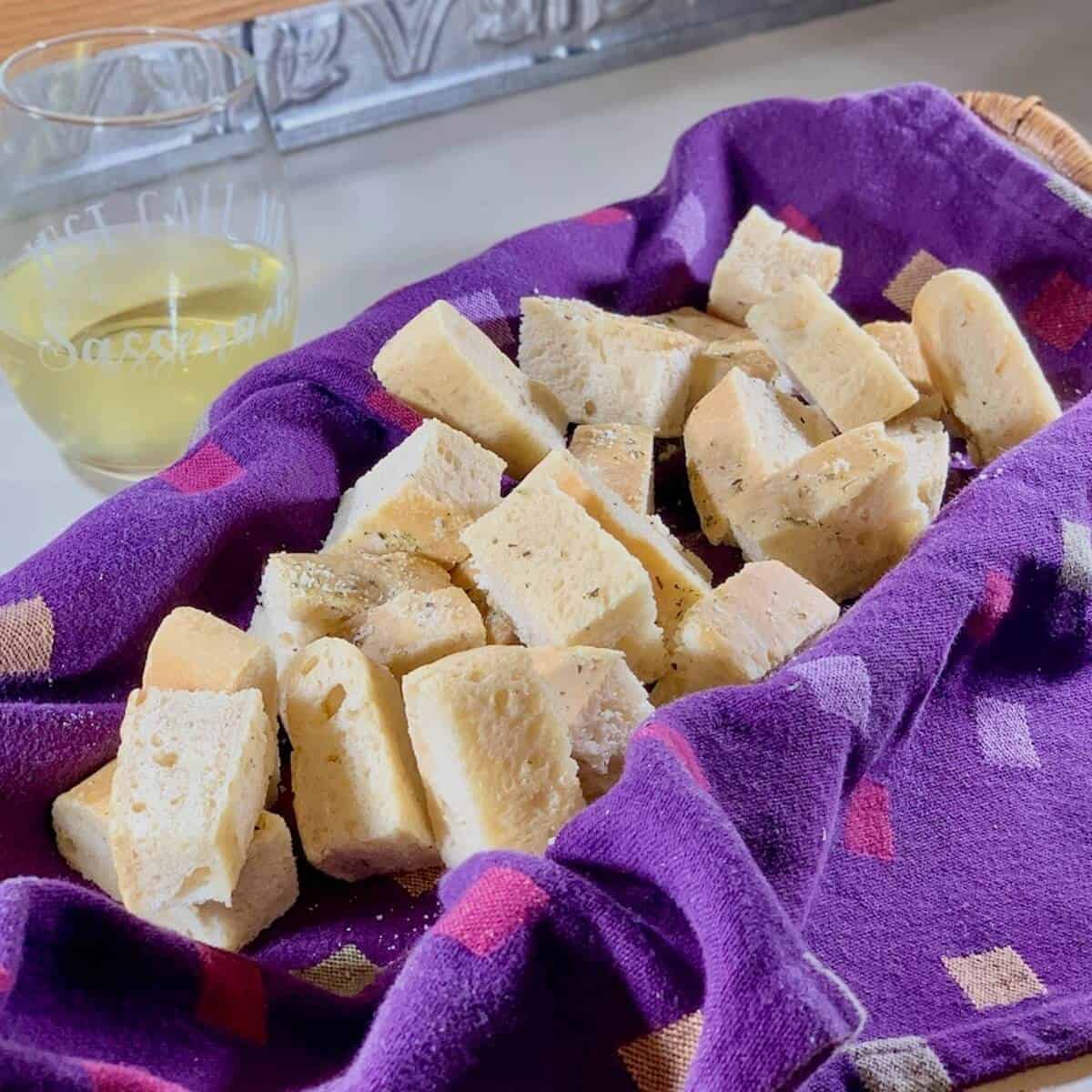
Jump to:
Why this recipe works
- An easy focaccia bread dough that uses unfed sourdough starter
- You can customize the toppings or keep it simple with salt and rosemary
- A flavorful bread with the subtle tang of sourdough
Isn’t it wonderful when one recipe can yield so many different variations? This easy sourdough discard focaccia recipe is made using sourdough starter discard (that's the starter that you remove from your starter container when you feed it).
Actually, when I’m at a creative loss for uses for my unfed starter discard, this is my go-to bread recipe I use to make pizza, naan, ciabatta, stromboli, or just plain loaves or buns.
Even though I do use commercial yeast in the dough, the sourdough starter discard still lends its tangy flavor adding more depth to the item. Yummm….
Plus, its recipe ratio is simple to remember (5 : 3 flour to water). You can easily figure out how much extra flour and water to use depending on how much discard you have (keep that kitchen scale handy).
This is the best sourdough focaccia recipe around! Light and airy, the bread is flavorful from the olive oil, rosemary, and salt, with the subtle tang from the sourdough discard. And when you customize it with your topping choices, you can pair it with almost any meal. Versatility for the win!
⭐⭐⭐⭐⭐
No joke, this is literally one of my favorite foods in the world.
- Shira
Recipe Ingredients
You'll need the following ingredients to make this sourdough discard focaccia recipe recipe:
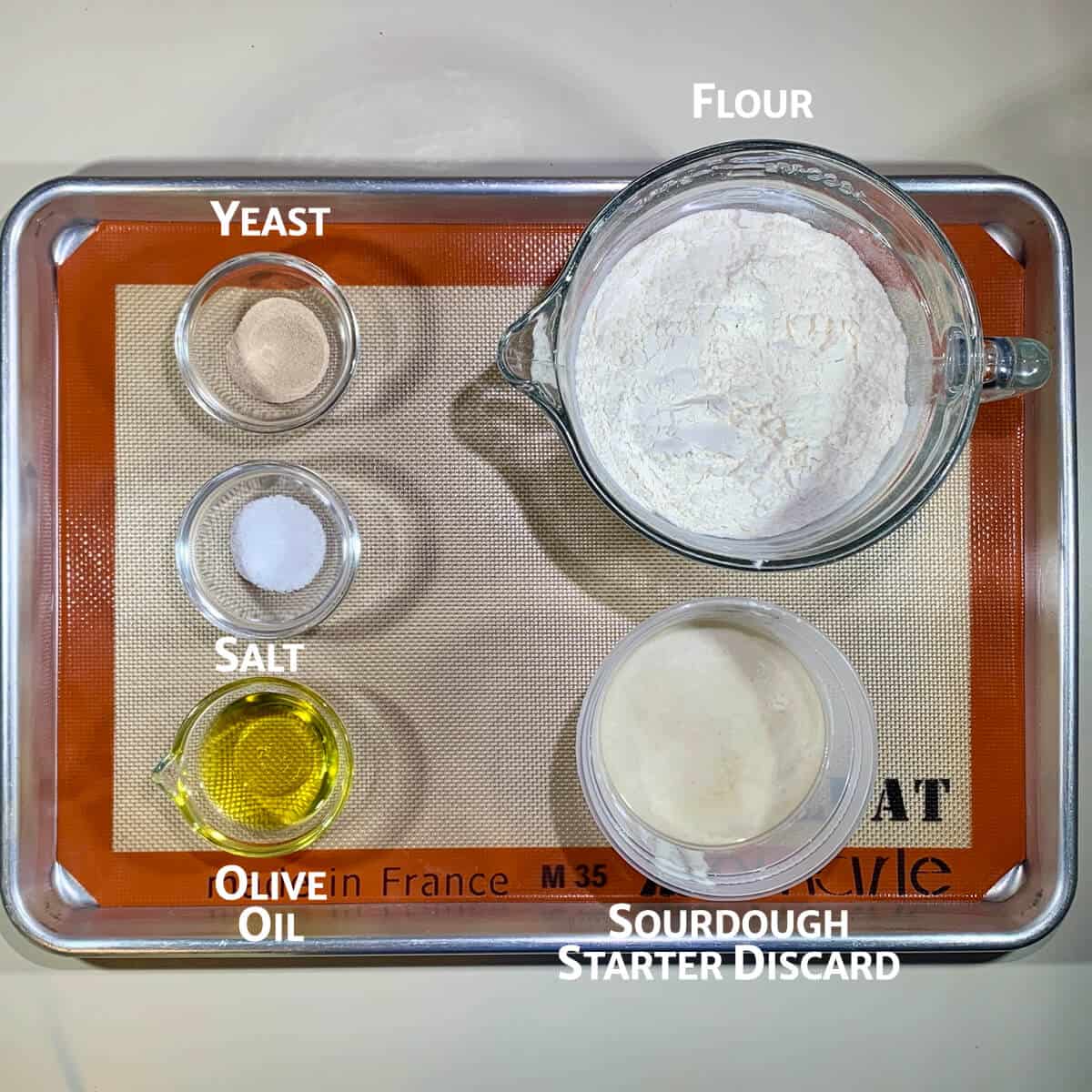
Ingredient Notes
Flour and water: My basic bread dough recipe has an easy-to-remember 5 : 3 recipe ratio of 5 parts flour to 3 parts water (by weight), giving the dough a 60% hydration level.
Sourdough starter discard: Sourdough discard is unfed sourdough starter, i.e. the amount you remove from your crock before feeding the remainder (I do this weekly). Since it's not active starter, it's used for flavor rather than fermentation (you'll need yeast for that).
Yeast: I use instant yeast in all my baking, but you can also use Active Dry yeast. If you use Active Dry yeast, then you might want to sprinkle yeast on to the warmed water with a teaspoon of sugar and allow it to sit for a few minutes before proceeding with the recipe. Letting it foam "proves" the yeast is active and ready to go to work.
If you'd like to omit the yeast and just use fed, active sourdough starter, see the instructions below.
Olive oil: Besides adding flavor, olive oil impedes the focaccia dough's ability to rise, like in any enriched bread dough. We're looking for a flat bread here, not a light sandwich loaf.
Toppings: Focaccia toppings at their most basic are olive oil and a sprinkling of coarse salt. You can use regular olive oil for the topping, or up the flavor with an infused olive oil, like this Garlic Infused Olive Oil.
Flavorings: I like to make sourdough focaccia bread with rosemary by chopping it up with the salt. Chopping the rosemary with the salt helps to release the essential oils in the rosemary as well as break up the coarseness of the salt.
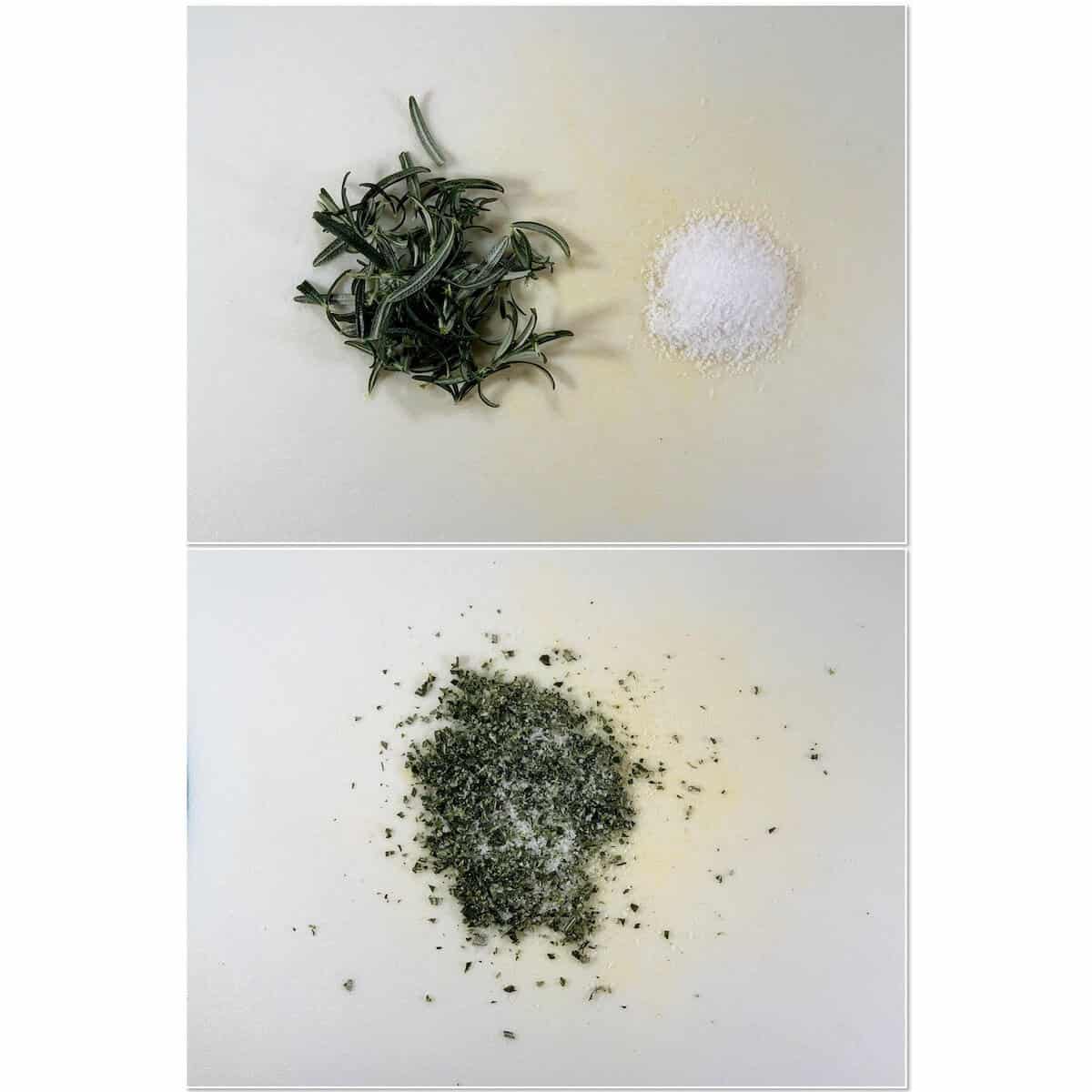
How to leave out the commercial yeast
If you don't want to use commercial yeast in this Sourdough focaccia bread recipe, replace the yeast with ½ cup (114 grams) of active, fed starter, reduce the amount of flour by about ½ cup (57 grams), and reduce the milk by about ¼ cup (57 grams). The rising time will be longer (about double) for both the first and second rises. (Note: there are some rounding inconsistencies here due to the volume vs. weight measurement conversion.)
How to make sourdough discard focaccia bread
Step 1: Make the dough
In the bowl of a stand mixer fitted with a dough hook, combine the flour, sourdough starter discard, water, 1 tablespoon extra virgin olive oil, salt, and yeast.
Start with the lesser amount of water to account for the humidity of the day. If the dough is too dry, add in 1 tablespoon water as needed until the dough is the right consistency.
Mix the dough on low speed for about a minute, then turn up the speed to medium-low and knead until the dough is smooth, about 5 minutes (photo 1).
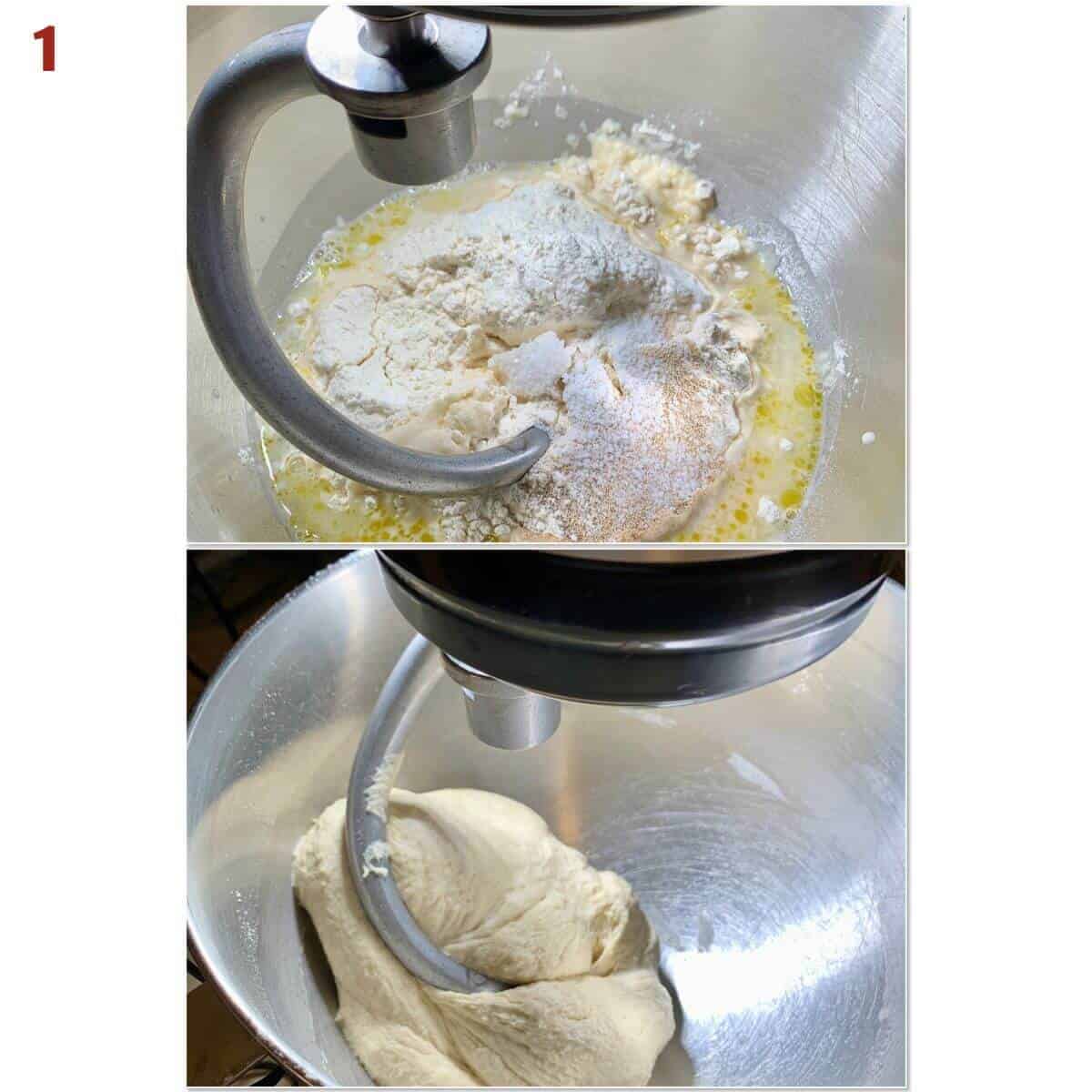
Step 2: Let the dough rise
Shape the dough into a ball and place in a greased bowl. Cover and put in a warm place to rest until doubled, about 3 hours (photo 2). The oven with just the light on works well.
If you want to develop the sourdough flavor even more, you can put it in the refrigerator after this first rise for up to 3 days. Let it come to room temperature for about an hour before shaping.
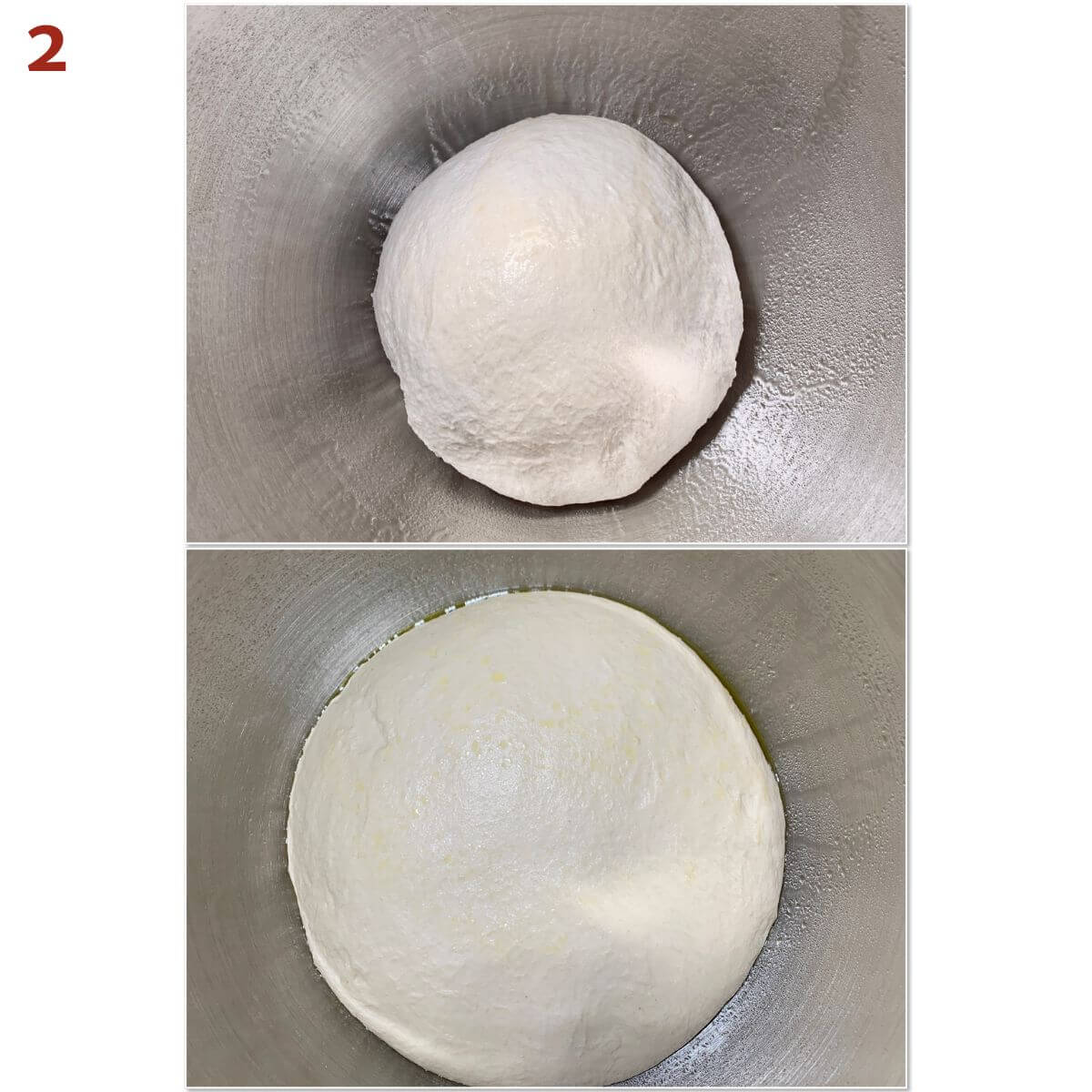
Step 3: Shape the dough
Lightly brush a baking stone with olive oil. Press the dough out into a rectangle, or your desired shape (photo 3).
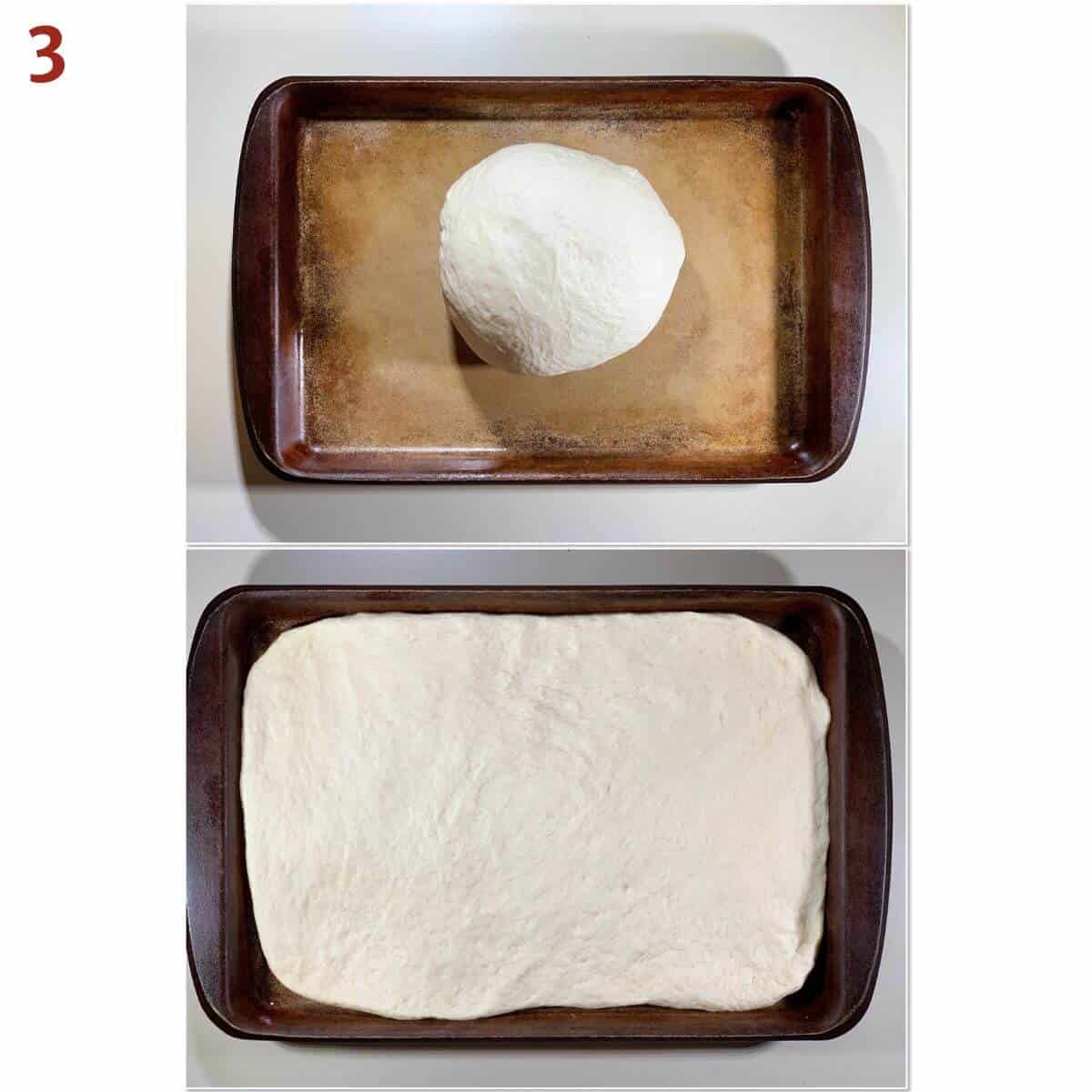
Step 4: Proof & dimple the dough
Cover the dough with lightly greased plastic wrap and let rise in a warm place for 45 minutes. Towards the end of the rising time, heat the oven to 400 °F.
Brush more olive oil on the top of the dough. Dimple the dough using 2 fingers, then sprinkle on your toppings (photo 4).

Step 5: Bake the focaccia
Bake the focaccia for 25 to 30 minutes or until golden brown. Remove it from the oven and transfer to a cooling rack (photo 5). Allow it to cool completely before slicing.
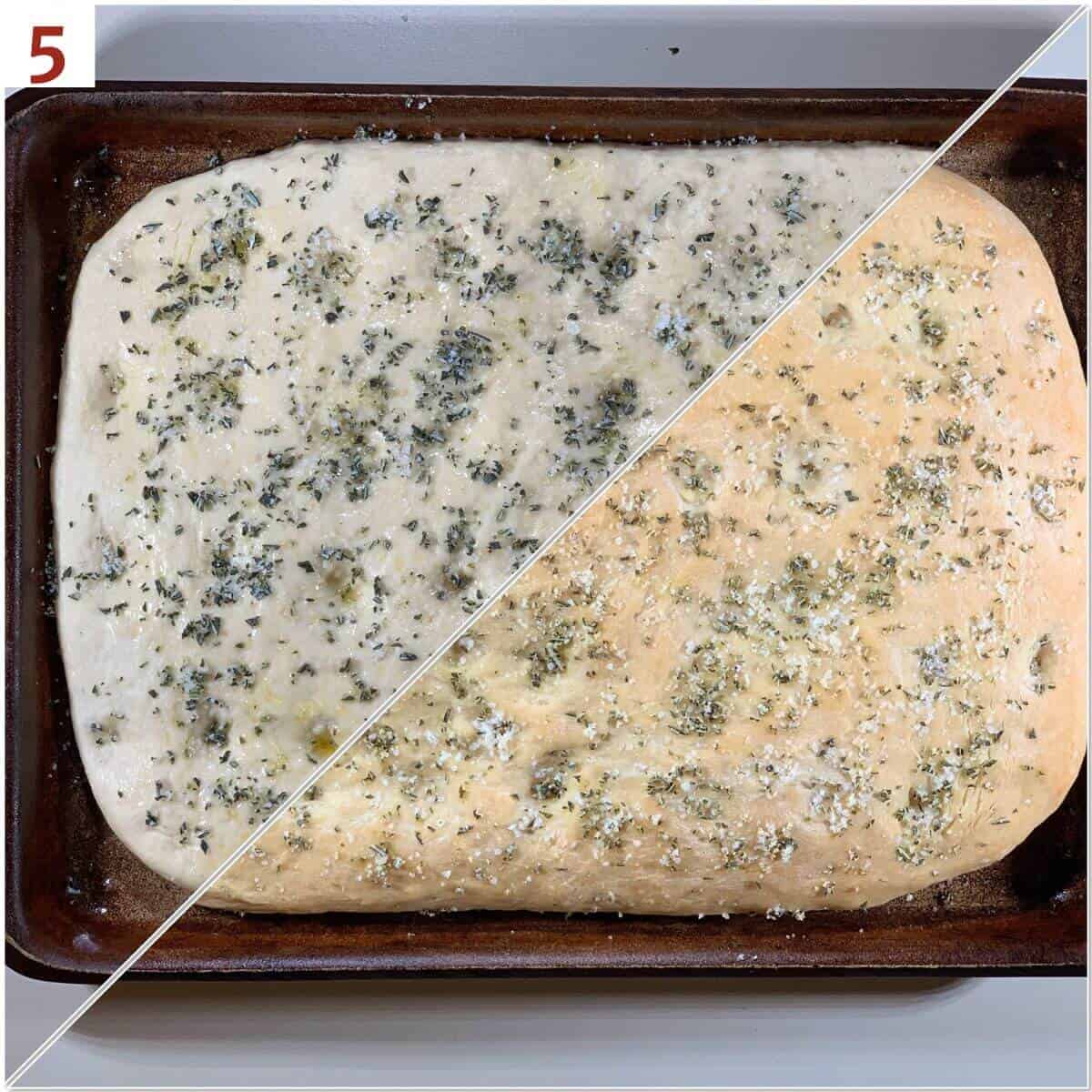
Step 6: Slice the focaccia
Slice the focaccia to your desired size (photo 6). I sometimes make croutons from the trimmings, but more often than not I just nibble them while I'm slicing!
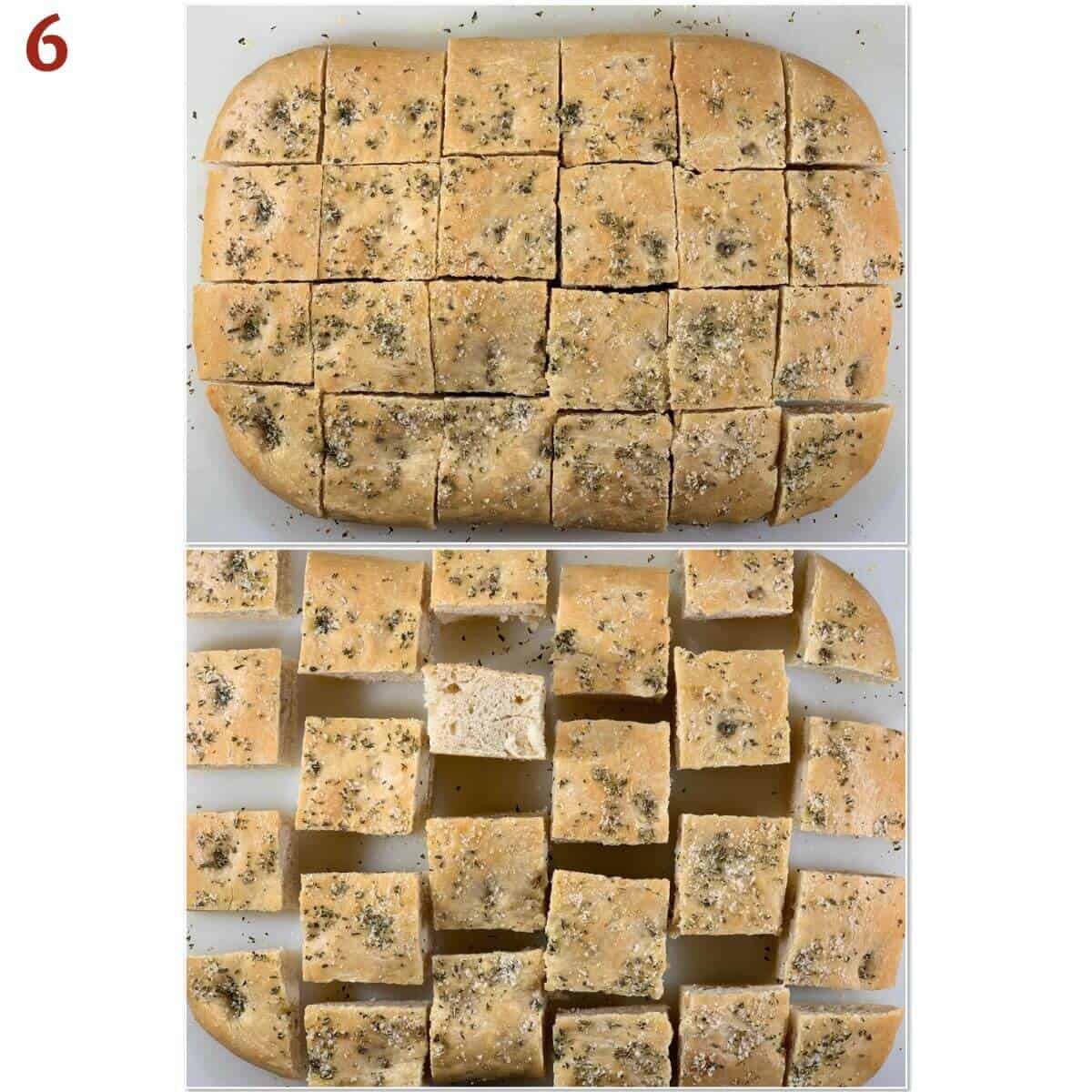
Storage instructions
Sourdough focaccia is best served fresh. It can be stored for several days in an airtight container at room temperature. Note that the salt will melt into the bread and the bread itself will not be as soft.
For longer term storage, freeze the cut pieces in an airtight container for up to 1 month, or the whole bread, well wrapped in plastic wrap and foil, for up to 6 months.
How to use sourdough focaccia
The wonderful thing about sourdough focaccia bread with rosemary is that it can go from a week-night supper to an elegant dinner party with ease! Here are a few suggestions:
- Serve as a side dish to Stuffed Shells with Ground Beef or Chicken Tenderloins & Garlic Pasta, alongside Chicken Limone to mop up that delicious sauce, or with this vegan Vegetable Pasta Bake
- Dip it in a spicy marinara sauce, a lemon pesto sauce, or with a garlic and herb baked brie
Questions asked and answered
Here are some questions you might have...
Hailing from Italy, focaccia is a flat oven-baked bread similar in style to pizza, but generally shaped and topped differently.
Focaccia bread can be made thick enough to slice in half for a sandwich or thin to just be a vehicle for its toppings (like a bread-based tart). I generally make my homemade focaccia in between those two extremes, but it’s really dependent on the amount of dough and the size of the pan.
My basic bread dough recipe has an easy-to-remember 5 : 3 recipe ratio of 5 parts flour to 3 parts water (by weight), with some salt and yeast added. I’ve made sourdough pretzels, bagels, and naan bread with great success using this ratio, adapted for using sourdough starter.
We haven't really talked about the type of baking pan to use. I use a well-seasoned medium baking stone (about 8- x 12-inches) and I push the dough out to the edges. This produces a focaccia that's about 1½ inches high.
You can vary the thickness by varying the amount of dough you make and/or the size of the pan you use. If you don't have access to a baking stone, a quarter sheet baking pan or half sheet baking pan lined with a Silpat silicone mat or parchment paper works well. Just shape the dough as thin or thick as you'd like.
According to Seasoned Advice, those dimples are there to catch some of the olive oil, improving the crust’s taste and texture. I’m not going to argue!
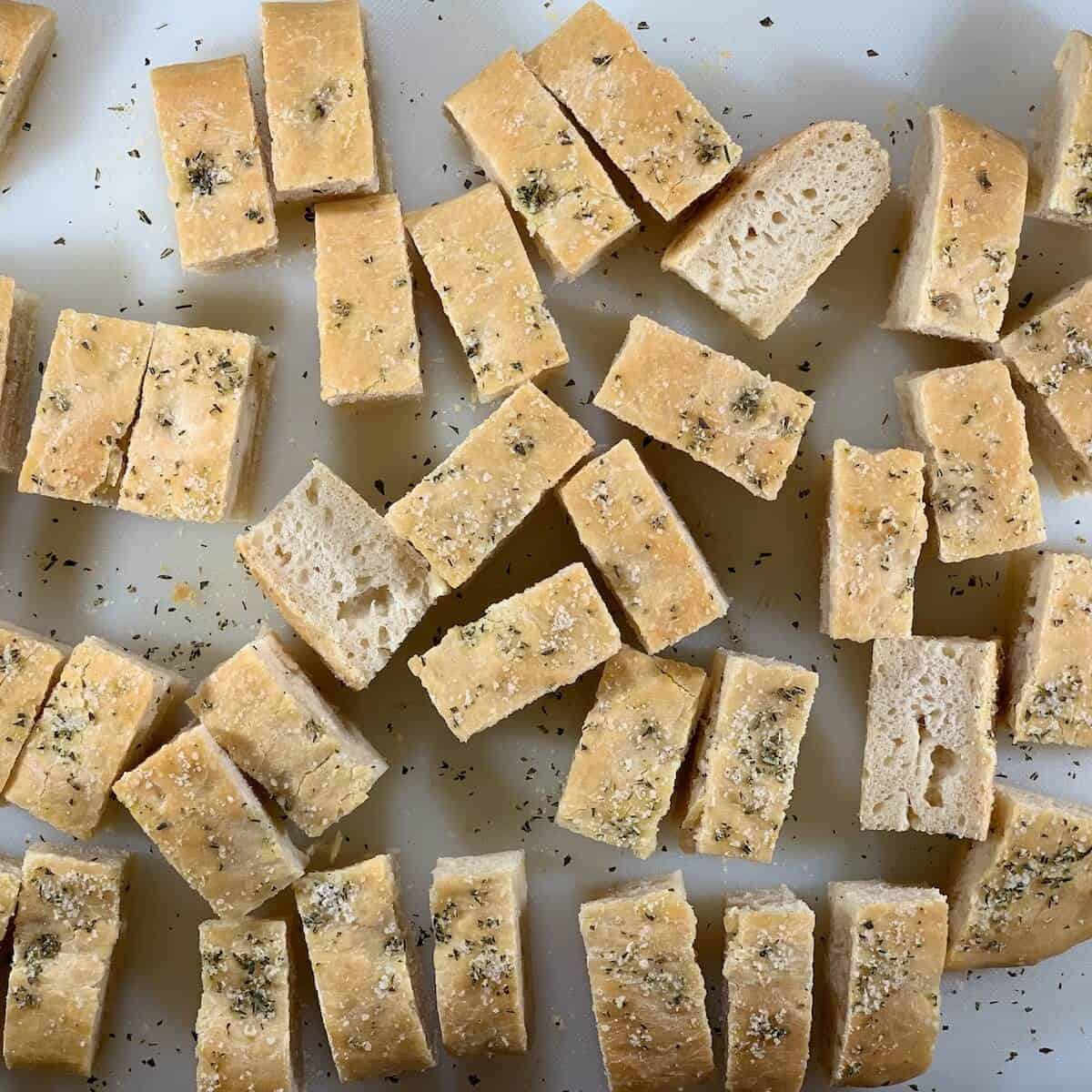
More recipes featuring sourdough discard to try
Recipe
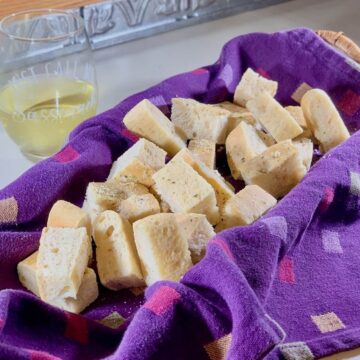
Sourdough Discard Focaccia
Ingredients
For the dough
- 2¾ cups all purpose flour, or more as needed
- 1 cup sourdough starter discard, unfed, at room temperature, see Recipe Notes
- ½ to ⅔ cup water, warmed between 100°F to 110°F, see Recipe Notes
- 1 tablespoon extra virgin olive oil
- 1 teaspoon kosher salt
- 1 teaspoon instant yeast, or rapid rise, see Recipe Notes
For the toppings
- 1 tablespoon fresh rosemary, finely chopped
- 1 teaspoon kosher salt, or amount desired
- extra virgin olive oil, as needed
Instructions
- In the bowl of a stand mixer fitted with a dough hook, combine the flour, sourdough starter discard, water, 1 tablespoon extra virgin olive oil, salt, and yeast. Start with the lesser amount of water to account for the humidity of the day. If the dough is too dry, add in 1 tablespoon water as needed until the dough is the right consistency.
- Mix the dough on low speed for about a minute, then turn up the speed to medium-low and knead until the dough is smooth, about 5 minutes.
- Shape the dough into a ball and place in an oiled bowl. Cover and put in a warm place to rest until doubled, about 2 to 3 hours. The oven with just the light on works well.
- If you’re baking on the same day, proceed to the next step. Otherwise, refrigerate the dough, tightly covered in the bowl, until you’re ready to bake (up to 3 days). This will also develop more flavor. Allow the dough to come to room temperature for an hour before continuing.
- Finely chop the fresh rosemary with the salt, or prepare the toppings of your choice. See recipe notes for some other topping suggestions.
- Lightly brush a medium baking stone with olive oil. Press the dough out into a rectangle. Cover with lightly greased plastic wrap and let rise in a warm place for 45 minutes. Towards the end of the rising time, heat the oven to 400 °F.
- Brush more olive oil on the top of the dough. Dimple the dough using 2 fingers, then sprinkle on your toppings. Bake the focaccia for 25 to 30 minutes or until golden brown.
- Remove the focaccia from the oven and transfer to a cooling rack. Allow to cool completely before slicing. Serve with olive oil for dipping if desired and enjoy!
- Storage instructions: Sourdough focaccia is best served fresh. It can be stored for several days in an airtight container at room temperature. Note that the salt will melt into the bread and the bread itself will not be as soft.
- For longer term storage, freeze the cut pieces in an airtight container for up to 1 month, or the whole bread, well wrapped in plastic wrap and foil, for up to 6 months.


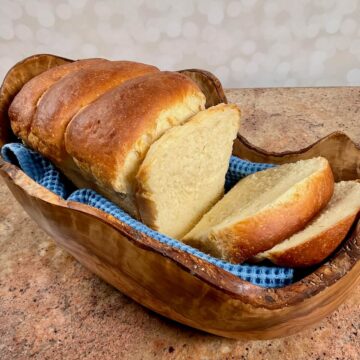
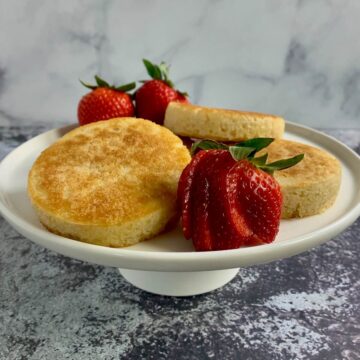

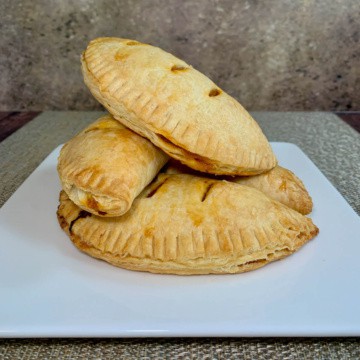
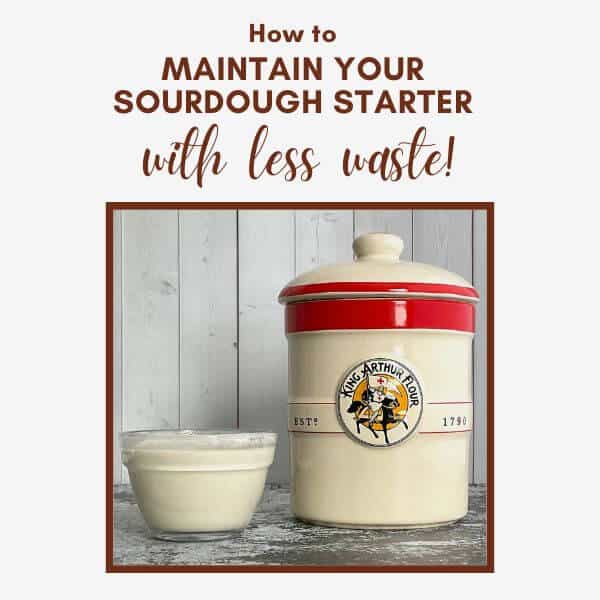
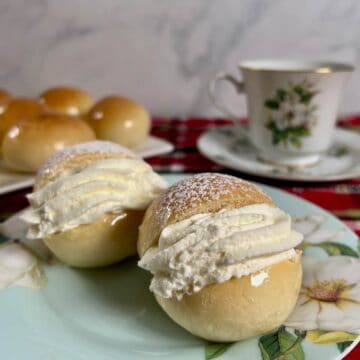

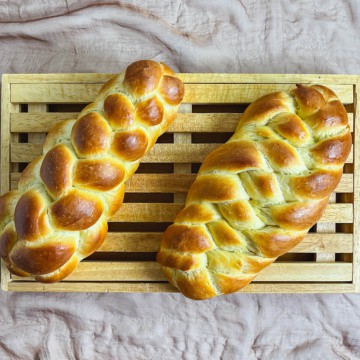
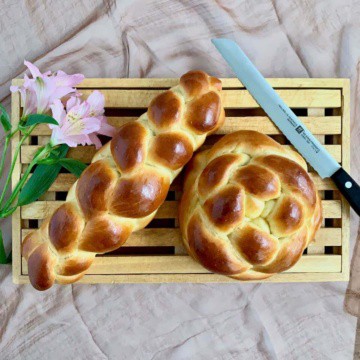
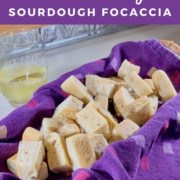
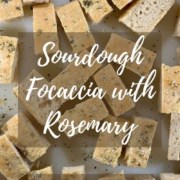
Andrea says
This turned out pretty well. It was a little dry, but I can't fault the recipe as I didn't weigh and pay super careful attention to my ratio of water to flour. The flavor and consistency were excellent, so I think next time I just might add a bit more olive oil on the top before baking so it gets crunchier and adds a little moisture. I love the flavor that the sourdough adds to it!
Tammy Spencer says
Hi Andrea, Thanks for your comments. I’m glad you likes the recipe, & know what will work for you the next time. Happy baking!
Allegra says
Smells great! Tastes great. I couldn't dimple mine though, it was too sticky! Maybe less water next time?
Tammy says
the dough shouldn't be too sticky, so yes, perhaps less water. Glad you liked the finished product!
Julie Schleusener says
When you say divide the amount of starter in half in the beginning..I don't understand. Are you only using half cup unfed starter then?
Tammy says
Hi Julie, good question. What I mean is I'm calculating how much flour and water is in the amount of starter discard I'm using by weight. Once I divide that weight in half, I can then figure out how much additional flour and water to add to get to a total of 15 oz of flour and 8 oz of water in the dough.
For example, if my discard weighs 8 oz, I know I have 4 oz of flour and 4 oz of water in that discard. That means I'll need an additional 11 oz of flour (15 oz - 4 oz = 11 oz) and 4 oz of water (8 oz - 4 oz = 4 oz).
The reason I go through all this is that I don't always have exactly a cup of starter discard, and I don't want to over or underestimate how much additional flour and water I'll need.
I hope this explanation helps, if not, feel free to reach out again. Happy baking! 😉
China says
Hi so it’s a little confusing when you read the ingredient list opposed to when you say “total amount of water is 8oz” since you said the total weight is already 15 oz with the starter and flour. If I want to measure everything into the mixing bowl then wouldn’t it be 15oz of starter and flour and then add 4 oz water so total weight in mixing bowl would be 19 oz plus yeast and salt?
Tammy says
Hi China, sorry if I wasn't clear. Assuming you have 1 cup (8 oz) of sourdough starter discard, that would be 4 oz each of flour and water (assuming the starter is 50/50 flour & water). So in order to have 15 oz total of flour, you'd need to add 11 oz of additional flour to your mixing bowl (15-4=11). For the water, you want a total of 8 oz of water, so counting the 4 oz already in the starter, you'd add an additional 4 oz to your bowl (8-4=4).
The reason I'm advising you to weigh in your starter and make up the difference to get to 15 oz flour & 8 oz water is that I don't always have exactly 8 oz of discard in any given week. If I weight my starter first, I'm going to be more accurate in how much additional flour and water I need.
I hope this helps. If not, feel free to ask again. Happy baking!
Carrie says
The recipe was very easy. My bread was dense and very crispy even though it’s not browned to the color of yours, It’s a very light golden. Not sure what I did wrong. Also it’s way too much salt on for the topping for me and I adore salt. I had to scoop out the salt from the pockets cause it all built up in there.
Tammy says
Hi Carrie, thanks for writing in. I think the denseness and crispiness has to do with the amount of flour added after you've measured your sourdough starter...too much flour = a heavier dough. Did you use the volume measurements or weigh the ingredients on a kitchen scale? If you use the volume method, be sure to spoon the flour into the measuring cup and level it off. That will make sure the flour doesn't get packed in, resulting in more flour being added.
As for the salt, just sprinkle on as much as you'd like. There's no set amount for that.
I hope this helps. If you try again, let me know how it goes. Happy baking!
Shira says
No joke, this is literally one of my favorite foods in the world.
Heather says
This looks delicious, can't wait to give it a try!